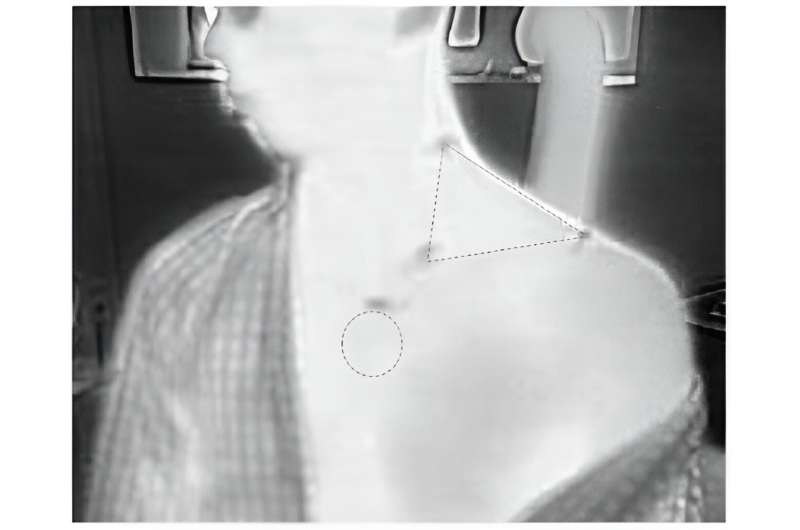This article has been reviewed according to Science X's editorial process and policies. Editors have highlighted the following attributes while ensuring the content's credibility:
fact-checked
proofread
Research disputes method to study possible association of body fat with warming cuddles and social attachment

Psychologists have suspected that the quantity of brown body fat, which is found in a specific area in the upper neck and can increase body temperature, is linked to the tendency of some people to seek physical contact. A recent study has sought to evaluate whether there is an easy, low-cost and non-invasive way to determine the activity of this tissue.
If such a method existed, it would be much more achievable to understand the links between seeking physical contact, such as warming cuddles, and the activity of brown fat tissue. The main hypothesis is that a poorer activity of brown fat tissue would be associated with more behaviors of seeking physical contact.
The inclination to seek physical contact is intricately linked to an individual's attachment style: be it anxious, avoidant, secure, or disorganized. In fact, an avoidant individual would typically refrain from seeking physical contact.
Whether attachment style is associated with a difference in the activity of brown adipose tissue is yet unknown. Eventually, a method to evaluate the association between thermoregulation and social behaviors would benefit social psychologists.
"In species other than humans, BAT (i.e., Brown Adipose Tissue) thermogenesis has been thought to be relevant for maternal care. But if and how BAT is involved in human interpersonal interactions or adult human attachment is equivocal," explain Nathan Vidal (Université Grenoble Alpes, France) and his co-authors in a new research paper, published in the journal Social Psychological Bulletin.
"The reason for BAT and its role in adult human social interaction being so ill-understood is that the most widely used method to measure the amount and the activity of BAT relies on very intrusive radioactive tracers," they add.
Inspired by the findings of their fellow researchers from 2012, who reported promising results when using infrared cameras to monitor in real time how much heat the brown fat depot in the supraclavicular region would give away in cool conditions, Vidal and his team set out to find more about the link between the curious thermal activity and individual attachment traits.
"Because of the importance of social connection and loneliness for health, BAT may well form an entry point to better understand why social relations are good for one's health, and we regard the measurement of BAT as vital for better understanding these mechanisms," say the authors of the recent study.
"Because of the risks associated with ionizing radiation during PET-CT imaging, researchers have sought to develop alternative methods to estimate BAT activity, such as infrared thermography."
Before that, however, the team had to replicate the earlier study to confirm infrared thermography as a reliable method, since their colleagues had only tested seven male individuals, which is a fairly small sample. So, in their study, Vidal and his team repeated the experiment with a total of 94 male and female participants.
To their disappointment, the researchers concluded that the infrared thermography method cannot measure heat emitted from body fat, and that future studies into BAT thermogenesis, social thermoregulation and attachment security should rather look into alternative methodologies and protocols.
"At this stage, we do not know why the protocol fails," the team says. "Perhaps the cooling protocol does not lead to sufficient BAT activity, perhaps the measure of infrared thermography cannot assess BAT activity in the supraclavicular area, or perhaps BAT activity can only be detected through infrared thermography in a subset of the population (e.g., men)."
More information: Nathan Vidal et al, Assessing the reliability of an infrared thermography protocol to assess cold-induced Brown Adipose Tissue activation in French psychology students, Social Psychological Bulletin (2023). DOI: 10.32872/spb.10461





















